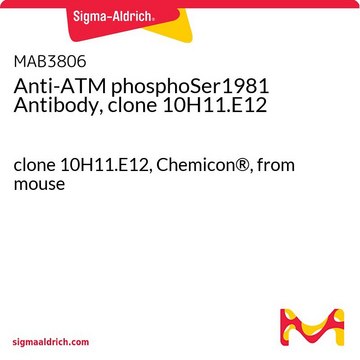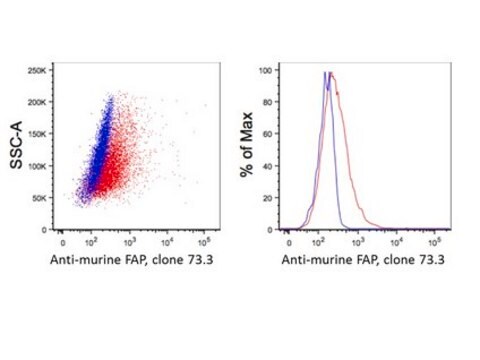A1106
Anti-ATM antibody,Mouse monoclonal
clone MAT3-4G10/8, purified from hybridoma cell culture
Synonym(s):
Anti-Ataxia-Telangiectasia Mutated
About This Item
Recommended Products
biological source
mouse
Quality Level
recombinant
expressed in mouse cell line
conjugate
unconjugated
antibody form
purified from hybridoma cell culture
antibody product type
primary antibodies
clone
MAT3-4G10/8, monoclonal
form
PBS solution
mol wt
antigen ~300 kDa
species reactivity
human, mouse
packaging
antibody small pack of 25 μL
concentration
~2 mg/mL
technique(s)
immunoprecipitation (IP): suitable
indirect ELISA: suitable
western blot: 0.1-0.2 μg/mL using HEK-293T total cel extract
isotype
IgG1
UniProt accession no.
shipped in
dry ice
storage temp.
−20°C
target post-translational modification
unmodified
Gene Information
human ... ATM(472)
mouse ... Atm(11920)
General description
Specificity
Immunogen
Application
Biochem/physiol Actions
Physical form
Disclaimer
Not finding the right product?
Try our Product Selector Tool.
recommended
Storage Class Code
10 - Combustible liquids
WGK
WGK 1
Flash Point(F)
Not applicable
Flash Point(C)
Not applicable
Regulatory Listings
Regulatory Listings are mainly provided for chemical products. Only limited information can be provided here for non-chemical products. No entry means none of the components are listed. It is the user’s obligation to ensure the safe and legal use of the product.
JAN Code
A1106-25UL:
A1106-VAR:
A1106-BULK:
A1106-200UL:
A1106-100UL:
Choose from one of the most recent versions:
Already Own This Product?
Find documentation for the products that you have recently purchased in the Document Library.
Our team of scientists has experience in all areas of research including Life Science, Material Science, Chemical Synthesis, Chromatography, Analytical and many others.
Contact Technical Service








